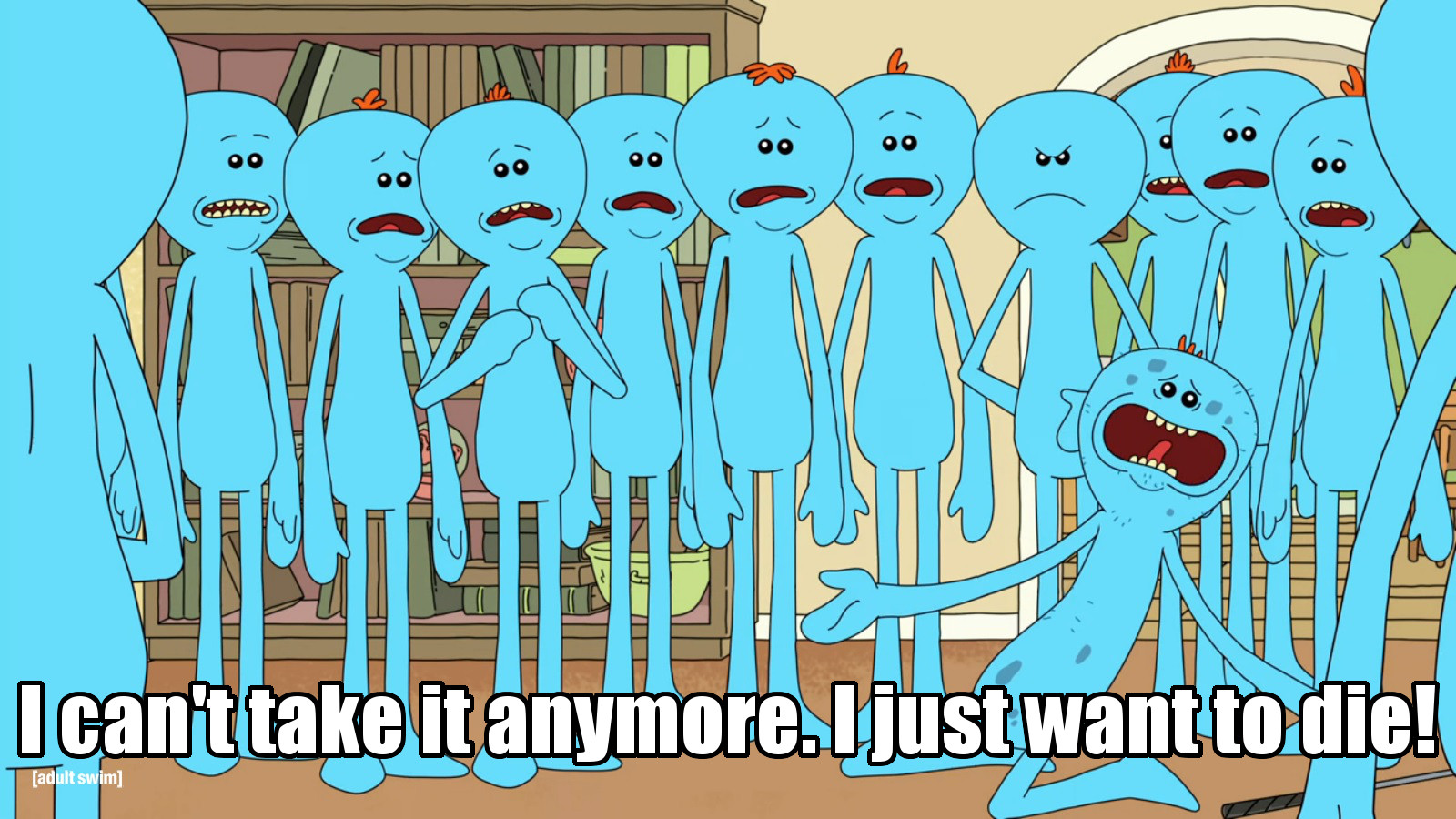The Irresistible Teleology of Mr. Meeseeks
I am terribly sorry, but I need to fulfill this purpose so I can go away. Look at me!
For those who have not been infected yet, I envy the simultaneous calm and darkness you enjoy before encountering the Meeseeks of Rick and Morty. The most popular show among millennials airing on Cartoon Network—but let’s be real, it’s a bit harder to quantify the scores of viewers pirating disparate episodes split up on YouTube with slightly altered sonic EQs to avoid the site’s copyright sweeps—Rick and Morty draws as many as 11 million viewers per episode, cultivating a fervent fan base that has become notorious for its nerd-bro malfeasance (see Szechuan-gate, where leagues of fans belligerently hounded brick-and-mortar McDonald’s restaurants for a novelty sauce briefly alluded to in one episode, causing a profoundly sad viral backlash).
I go to great efforts to separate myself from these fans, yet nevertheless, I am unable to free myself of one of the show’s most fascinating creations: Mr. Meeseeks.
Resembling something between Gumby and the Smurfs, Meeseeks are a species who embody Aristotle’s key theory of teleology, the idea of design and purpose in each material thing. Born from the pushing of a button on a box, Mr. Meeseeks appears, ready to fulfill any task assigned to him. Once he fulfills his purpose, he goes away—or rather explodes into dust.
Meeseeks are cleverly the exact opposite of human beings, precisely because of their teleology. Rather than fumbling around for meaning until the end of their lives, Meeseeks are born with a singular purpose to fulfill, and once that purpose is fulfilled, they are free from the obligations and existential uncertainty of life. Yet in Rick and Morty’s cult classic episode “Meeseeks and Destroy,” this teleology becomes complicated when the task can’t be completed and Mr. Meeseeks can’t die, causing him to make a Faustian bargain by using the box to create more Meeseeks, who will go to any lengths to fulfill their task and finally die.
So what kind of tasks does the show envision?
Make the daughter of the show’s family more popular at school? No problem. Make the matriarch a more perfect woman? Easy-peasy lemon squeezy.
But take two strokes off of father Jerry’s golf game? Even Camus and Sartre would be at a loss for answers.
Suddenly the task becomes something beyond Sisyphean, taking the Meeseeks from straightforward and hilariously voice-cracking advice such as “square your shoulders Jerry!” “choke up on the club!” and “but most of all, you’ve gotta relax” to the episode’s ultimate proclamation, “existence is pain!”
Despite multiplying into a sizeable cohort, no number of naked Smurf-Gumbies can get Jerry to make square contact with the ball. Internal strife leads a faction of follow-through devotees to rip the limbs off of a sect of Meeseeks devoted to choking up on the cub, and chaos breaks out.
While the allegory is perhaps straightforward, it is nonetheless a clever cautionary tale about focusing too heavily on outcomes and creating a consequentialist society where the ends justify any means.
Another apt comparison, according to the mother Beth, is that “the Meeseeks are like the guys I went to high school with, willing to do anything to achieve their task.”
So the next time you make a checklist, set goals, or simply ponder your purpose in life, be glad that you have choices, and that hopefully your existence isn’t too painful.

